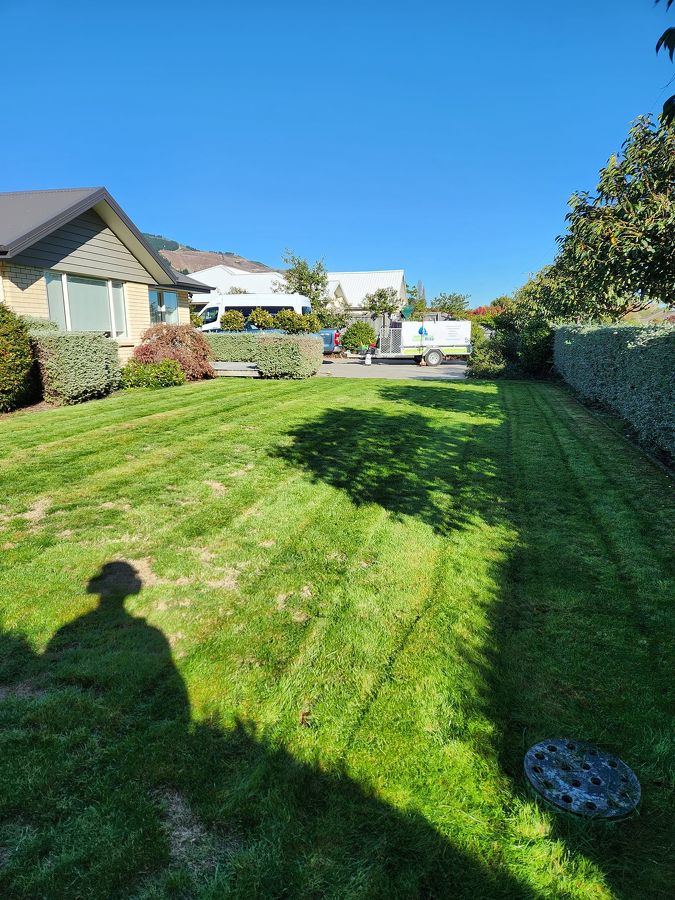How to Maintain a Stunning Lawn in New Zealand with Less Time and Effort
Date: 5 Jun 2024
If you’re like most Kiwi homeowners, you probably spend a fair bit of time maintaining your lawn—up to 70 hours a year, in fact. However, the secret to a lush, green lawn isn't just in the amount of time you dedicate but in how and when you perform your lawn care tasks. Drawing from years of experience, I've discovered that the health of your lawn is paramount. A robust lawn is less susceptible to diseases, stress, and pests, and it features strong roots that efficiently absorb nutrients and water from the soil. Plus, thick, dense grass helps keep weeds at bay, ensuring your lawn remains beautifully verdant.
Although this article primarily addresses cool-climate grasses found in New Zealand, much of the advice can also be applied to warm-climate varieties. Read on for expert tips from two industry pros from Lawn Rite Lawn Mowing in New Zealand.
How to Achieve a Healthy Lawn
Follow these tips to maintain a green, healthy lawn year-round in New Zealand.
Adjust your cutting height to the time of year.
The optimal height for cutting grass varies by type, region, and season. "Blade height is crucial," says Castillero. He adjusts his blade height throughout the year based on temperature changes.
"In spring, I set my blades at 6.5 cm," he notes. As summer temperatures rise, he increases the height to 7-9 cm because longer grass is less prone to burning.
For warm-climate grasses, these heights will be slightly lower.
Use a sharp mower blade to cut your grass.
A well-maintained, sharp, and balanced blade cuts grass cleanly and evenly, while a dull blade tears grass, leaving it vulnerable to disease. Sharpening and balancing a blade three times a year is usually sufficient—unless you encounter a lot of rocks.
A good indicator that your blade needs sharpening is the condition of your grass. "If the grass tips look torn, split, and start turning yellow, it’s time to sharpen your blades,
Prioritise regular, long waterings of your lawn.
Regular, longer watering sessions encourage deep root systems more effectively than frequent, short waterings.
Lawn Rite recommends aiming for an inch (2.5 cm) of water per week. Use a rain gauge or a container placed on the grass to measure the water. Depending on the temperature, type of grass, and soil conditions, you might need to water up to 5 cm per week.
The best time to water your lawn is early morning, which minimises water loss due to evaporation and allows the grass to dry before nightfall.
Mow only the top one-third of the grass blade (and don’t rake up the clippings).
The top third of a grass blade is thin and decomposes quickly when cut, contributing up to one-third of the nitrogen your lawn needs. Cameron from Lawn Rite advises against catching the clippings, as they can serve as a valuable source of recycled nutrients.
He also endorses the "1/3 Rule": only cut the top third of the grass blades. Cutting more than this can shock the roots and expose stems, which are more likely to burn in direct sunlight.
Schedule fertilising and weed treatments for your grass at peak times.
Weed killers and fertilisers help maintain a weed-free lawn throughout the season. Here are a few general guidelines:
- Attack weeds in early spring and summer. Early spring is the time for pre-emergent weed treatments, before weeds have a chance to start growing.
- Fertilise in early spring to kick-start grass root development.
- Follow product directions carefully. Some chemicals require moisture to work effectively, while others may be rendered ineffective by water. Pay attention to safety warnings as well.
Aerate your lawn in the Autumn
Aerating, the process of removing small plugs of soil, offers several benefits. It enhances air-to-soil interaction, allows deeper water and fertiliser penetration, and reduces soil compaction for better root growth. Aerating is one of the best practices you can perform. The best tool for this task is a gas-powered aerator, available at most rental centres.
Timing is critical. While you can aerate in the spring, autumn is the optimal time. "A great time to aerate is in April or May.
FAQ’s
Are mushrooms a sign of a healthy lawn?
Not necessarily. Mushrooms may indicate poor drainage, compacted soil, or a nutrient imbalance. You might be watering too early and too much. Mushrooms don't harm your lawn but can be unsightly.
Is clover a sign of a healthy lawn?
Yes! If you prefer clover in your lawn, it can provide nitrogen to the soil and serve as a drought-resistant, low-maintenance green cover. However, if you desire a purely grass lawn, clover can be unwelcome. Its presence doesn't signify an unhealthy lawn, though.
Are crickets a sign of a healthy lawn?
It depends. Common field crickets, found throughout New Zealand, can indicate a healthy lawn as they consume weed seeds and return organic material. However, mole crickets, which feed on grassroots, can cause significant lawn damage.
Back...
